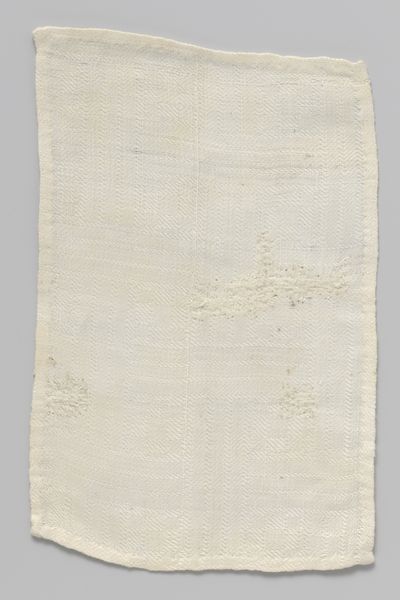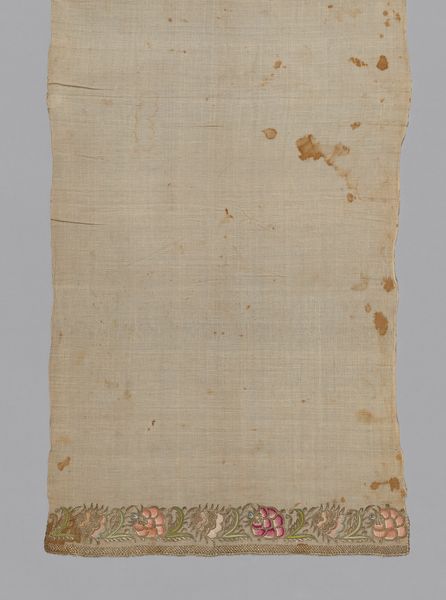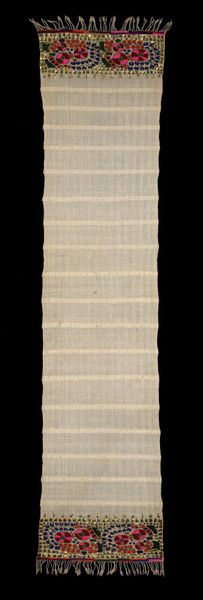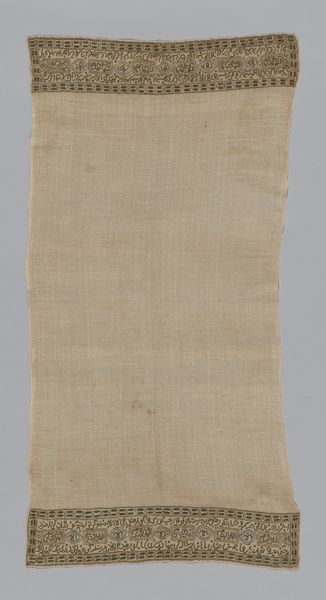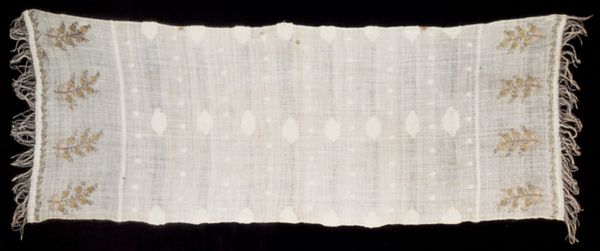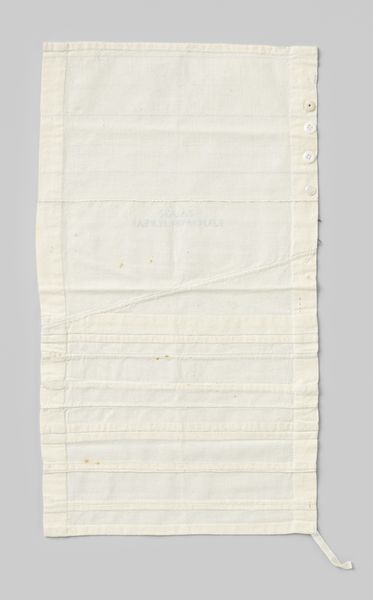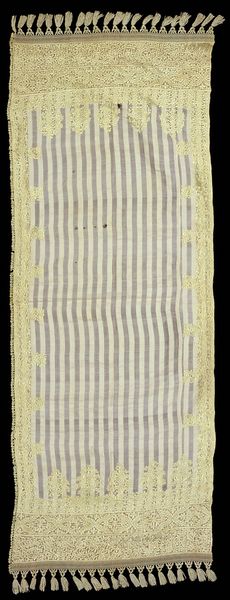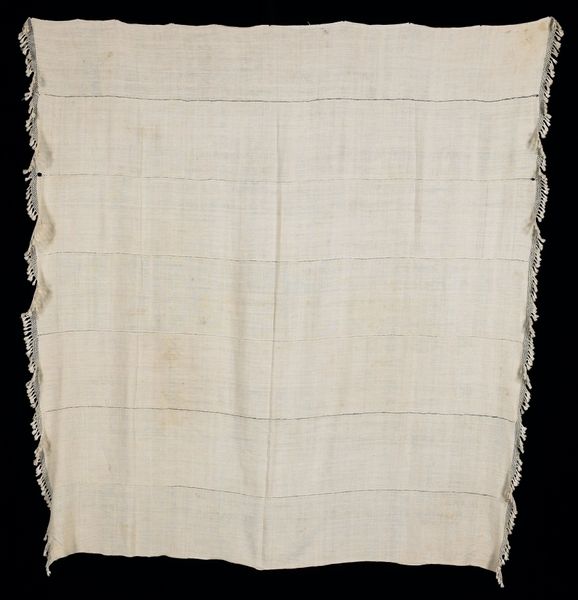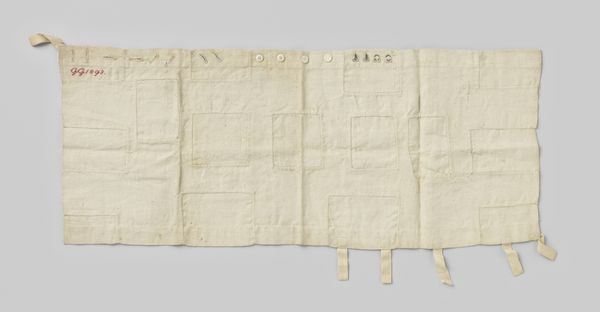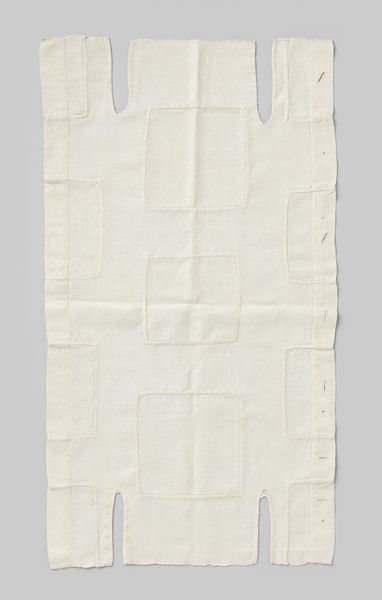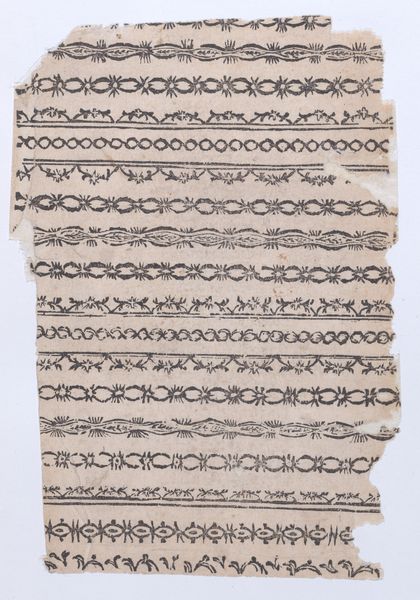
Lap batist met borduurlijnen en de initialen I.Z.R en vijf tussenzetsels van kloskant met twee gestileerde gespiegelde bloemen tussen vertikale lijnen en ovalen c. 1600 - 1950
0:00
0:00
fibre-art, weaving, textile
#
fibre-art
#
weaving
#
textile
#
decorative-art
Dimensions: height 55 cm, width 47 cm, length 46 cm, width 2.5 cm, 2.5 cm
Copyright: Rijks Museum: Open Domain
Curator: Here we have what’s called a ‘Lap batist met borduurlijnen en de initialen I.Z.R en vijf tussenzetsels van kloskant met twee gestileerde gespiegelde bloemen tussen vertikale lijnen en ovalen.’ It's thought to have been made sometime between 1600 and 1950, and its creator is unknown. Editor: The name's quite a mouthful! My initial impression is how delicate it appears, despite its age. The fabric seems almost ghostly. Curator: "Lap batist" indicates a linen cloth, and the needlework and lace point to domestic production. The initials I.Z.R. suggest this may have been part of a larger household textile, perhaps a set of linens. This era saw cloth as both valuable and expressive of social status. Editor: It’s fascinating how these small embroidered flowers are repeated. Flowers are timeless symbols of femininity, domesticity, and the passage of time. Perhaps, in a more metaphorical reading, the piece is reflecting themes of remembrance, preservation, the enduring cycle of nature made personal through the craft. Curator: Precisely! The repeated patterns, though simple, demand labor and skill. We can almost see the maker meticulously at work, constructing both the plain cloth and decorative lace. The imperfections speak of human hands and a time far removed from mass production. It makes you think about textile production back then and what role did it serve. Editor: The textile work indeed speaks to that role through the repeated motifs— almost meditative, as though the stitching holds within it generations. We can consider the linen’s cultural implications, think about the layers of symbolic meaning embedded into it. Curator: Viewing this now, with visible wear, the fading, the frays...it encourages questions about ownership, use, and the changing value assigned to hand-made goods. And what happened to I.Z.R, I wonder? Editor: And I see in the design echoes of earlier symbolic languages, how this cloth links back into that much longer narrative of humanity rendered and felt through shared symbols, a beautiful, tactile echo across centuries. It’s very powerful! Curator: Yes, it's an intersection between the intimate and the historical that makes textile work such a rich field of study.
Comments
No comments
Be the first to comment and join the conversation on the ultimate creative platform.
